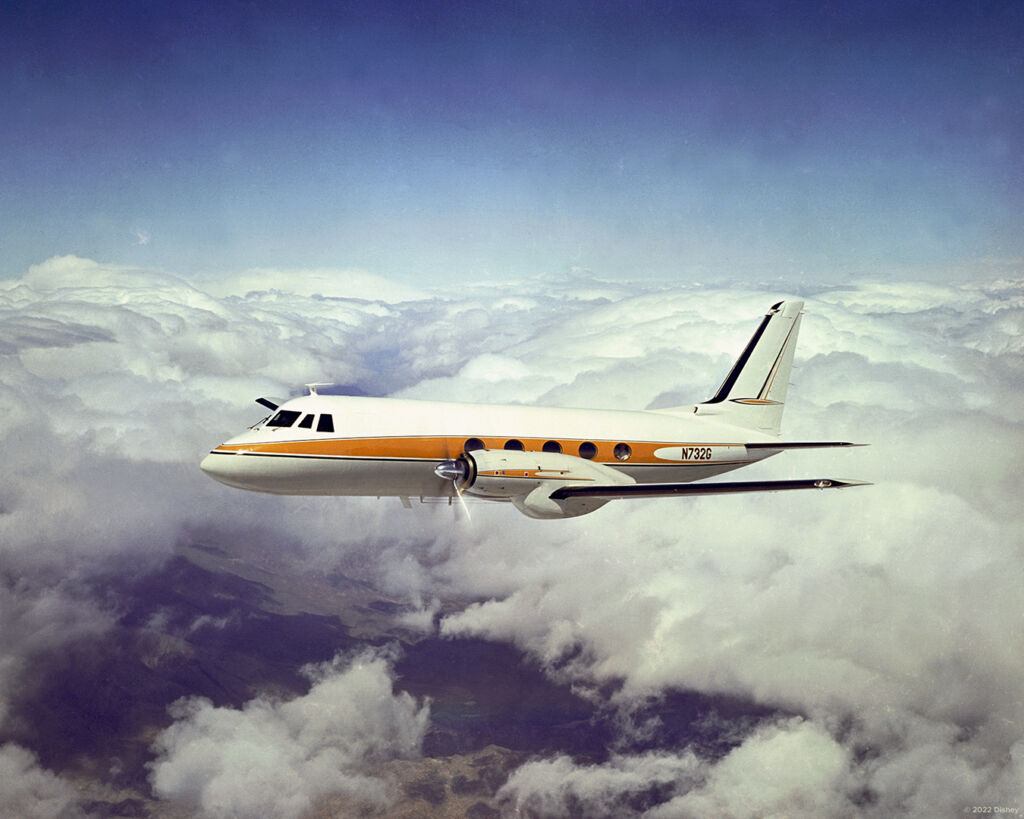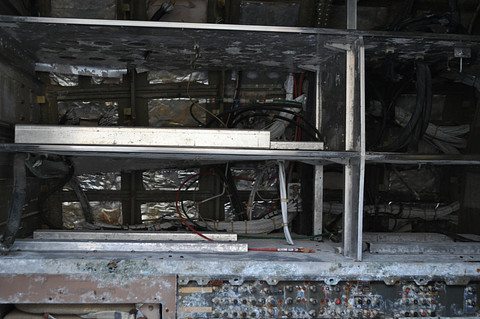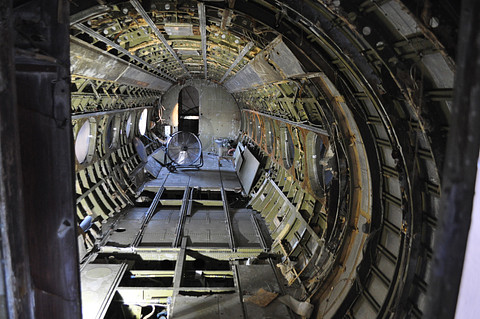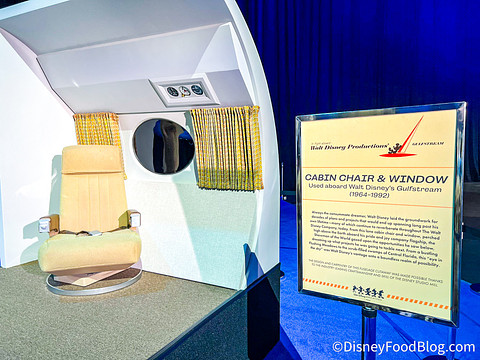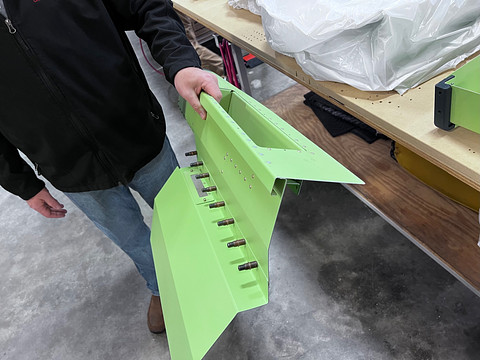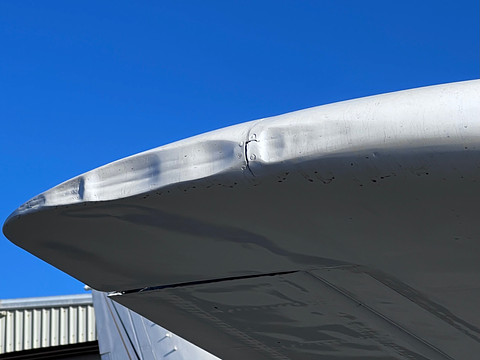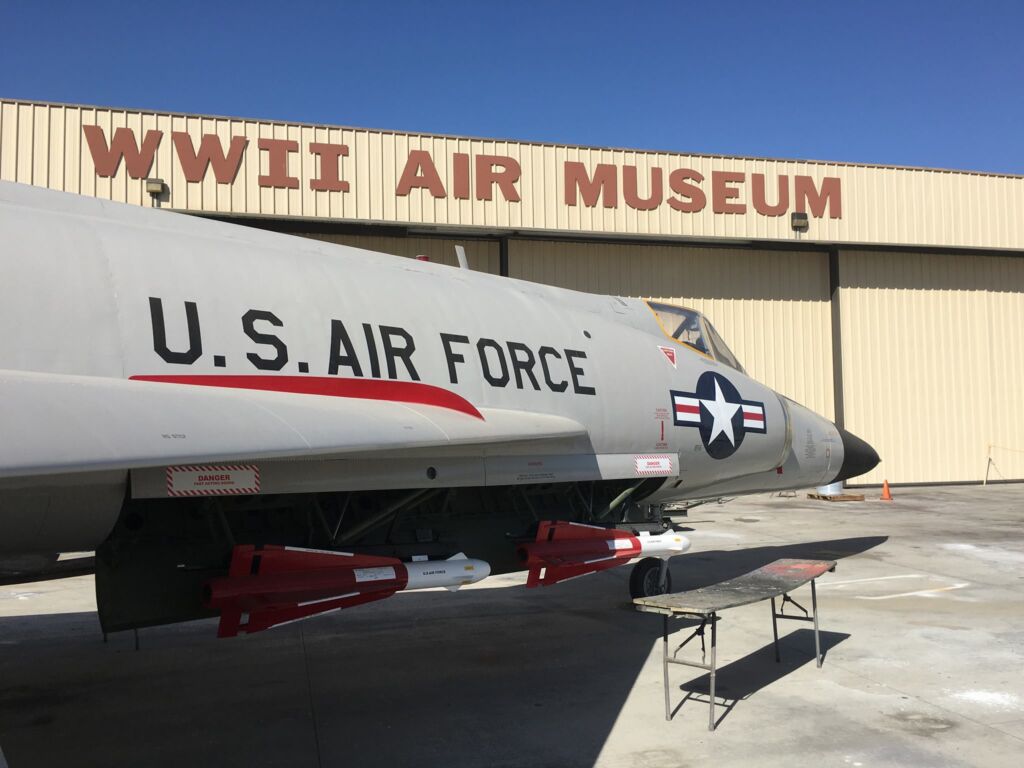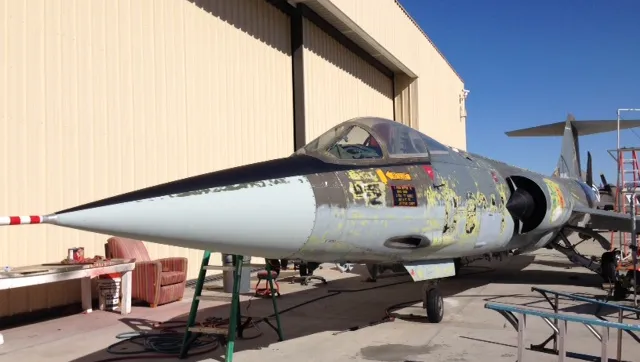Our Restoration Projects
The Palm Springs Air Museum is dedicated to preserving aviation history by meticulously restoring iconic aircraft for public display and education. Our skilled restoration crew has breathed new life into numerous remarkable planes, including the F-117A Nighthawk “Black Devil,” “The Movie” Memphis Belle B-17, the Boeing Skyfox, and more.
Your generous donations have been instrumental in these restoration efforts, allowing us to preserve our aviation heritage for future generations. With your continued support, we can embark on new projects, ensuring that these glorious machines remain airworthy and accessible to the public.
Over 30 aircraft, including the F-86, F-102, F-4, F-105, and MiG II, have been meticulously restored at our museum. Your donations directly contribute to keeping these engineering marvels in pristine condition, enabling us to share their stories and inspire awe in all who witness them.
F-117A NIGHTHAWK “BLACK DEVIL” #833
Our latest and biggest restoration project to date is the F-117A Nighthawk “Black Devil.” One of only 59 built, this stealth fighter logged a total of 5,140 hours of flight (75 of which were in combat, making it the second highest combat time F-117) and was the 49th Wing Commander’s aircraft during Operation Allied Force, a bombing campaign against the Federal Republic of Yugoslavia during the Kosovo War in 1999. The aircraft was also used in Operation Desert Storm, the 1991 military operation to expel Iraqi forces from Kuwait. It is one of four being given to museums around the country for display.
After being delivered to the museum on the back of a truck and in pieces, our amazing restoration crew has spent hundreds of hours working to restore this stealth fighter to what it once was, down the finest detail. If you’d like to help supply the numerous materials to help with this restoration, click on the button below! Every donation gets us one step closer to finishing the Nighthawk restoration.
MOVIE MEMPHIS BELLE
Recently flown in from New York, “The Movie” Memphis Belle has joined the PSAM’s ever growing fleet of aircraft. Since receiving the aircraft, the museum’s team of mechanics have been meticulously inspecting the aircraft from nose to tail. “The Belle” has also undergone a deep cleaning, including the paint on the aircraft, restoring it to as it would’ve been when it rolled off the Boeing line. The restoration of this magnificent airplane will continue to ensure it remains in flying condition, and you can help! Each donation goes directly towards maintaining “The Movie” Memphis Belle, so click below to donate!
SKYFOX
The Skyfox was an American twin-engine jet trainer aircraft, a highly upgraded development of the Lockheed T-33. It was designed as a primary trainer to compete with and replace the Cessna T-37 Tweet. Besides its primary role as a trainer, the aircraft was envisioned to have other roles as well, including ground attack. The program was started by the Skyfox Corporation in 1983 and was acquired by Boeing in 1986. The rework included the replacement of the Allison J33-A-35 turbojet by two Garrett TFE731-3A turbofans. It also included an extensive redesign of the airframe.
WALT DISNEY’S MOUSE ONE
CONVAIR F-102 DELTA DAGGER
The restoration of the Convair F-102 “Delta Dagger” at the Palm Springs Air Museum has been a remarkable journey. In July 2016, the aircraft was nearing completion after extensive efforts by the restoration team. The F-102, which had been left to deteriorate in a forest in Arkansas for over 40 years, was practically rebuilt from the ground up. The restoration crew demonstrated exceptional skill and dedication, even handcrafting the tail cone and fabricating a missile from scratch.As of today, the F-102 restoration project has been completed, showcasing the museum’s commitment to preserving aviation history. This aircraft, once almost lost to nature, now stands as a testament to the hard work and expertise of the museum’s restoration team. Visitors can now appreciate the fully restored F-102, which played a critical role as the world’s first supersonic all-weather jet interceptor and the USAF’s first operational delta-wing aircraft.
F-100 Super Sabre
F-104 Starfighter



